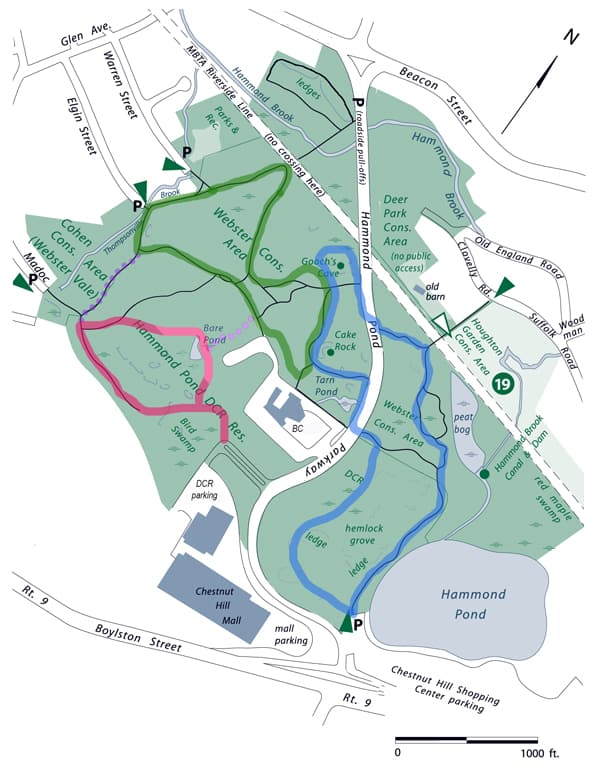Webster Conservation Area, Newton
Webster Conservation Area, Newton
Newton, Massachusetts 02459
Official WebsiteWebster Conservation Area map
About this Location
The largest conservation area in Newton is wooded, with noted rock outcroppings of Roxbury Puddingstone, brooks, ponds, wetlands, fields, and a historic woodland garden.
Activities to enjoy here are walking, jogging, nature study, geology study, birding, rock climbing, and cross-country skiing.
Gooch’s Caves
These are Roxbury Conglomerate fissure caves in the southwest section of the conservation area. Several marked trails pass by them.
Sandstone Ledges
These thick ledges alternate with Roxbury Conglomerate rock. They are sandstone formations that may have been river deposits. You can see the evidence of ripple marks, such as are made by water. Note the very long, almost vertical joints toward the westerly end of the ledges. The ledges are located west of Hammond Pond Parkway and north of the MBTA tracks, off the southbound lane of the Parkway. Enter the pathway about 600′ south of Beacon Street, where a loop trail circles around the ledges.
Deer Park
Mrs. Webster brought a couple of dozen deer into the area many years ago. Today no deer remain in the enclosed area of six acres. A rough, unmarked loop trail follows the outside of the fenced area. The Conservation Commission is considering the development of a trail system.
Hammond Woods and Pond
The trails and cliffs attract hikers and rock climbers. The pond, as a “great pond” (any pond larger than 10 acres) is state-owned, and operated by the DCR. Its average depth is just four feet. Access is from the gravel beach on the west side of the pond, near the parking lot of The Street at Chestnut Hill shopping center. The pond and its adjoining marshes and woodlands provide valuable habitats for a diversity of wildlife, aquatic species, and native plants.
Hammond Pond is adjacent to the Webster Conservation area.
Notable Trails
The AllTrails website has a description and map of a hike at Webster Conservation Area
Features
Restrooms on site
Wheelchair accessible trail
Entrance fee
Content from Official Website
Last updated January 9, 2024
